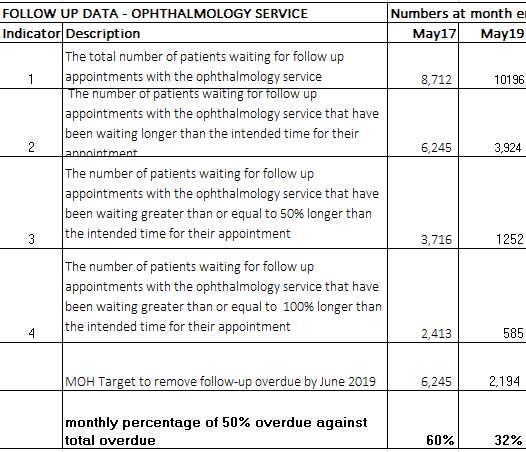Our goal is to ensure that no more than 5% of follow up patients wait for longer or equal to 50% of the intended time by 30 June 2019.
We attempted to increase capacity by opening three additional clinic rooms on the Middlemore Hospital site.
The Mega Clinics were the most effective and dramatic intervention for reducing the number of overdue follow ups, and managing the risk associated with this. However, the more successful we are in seeing patients in a clinically appropriate timeframe, the more capacity we need. This was expected, but is difficult to quantify. As we have refined our planning, we have adjusted (upward) our expectations about ongoing demand, improving our understanding of what is required for sustainable solutions. It is important to note that the Mega Clinics are designed for short-term ‘blitzes’ and are not a sustainable strategy for managing waiting lists.
The chart below captures our successes from our interventions. Since December 2018, we have lost ground. This reflects a seasonal variation, experienced in other years, due to staff and patient holidays over the Christmas period and the flow on effects of that.

The most successful intervention for identifying patients who are most at risk was the introduction of the Acuity Index Tool.
We have identified a small number of patients who have potentially been harmed as a result of delayed follow up. Each patient has had a case review and we continue to provide appropriate support to them, including referral to ACC. The Health Quality and Safety Commission has been advised of three cases of adverse outcomes in this group.
Some conditions that we are no longer able to see and treat contributed to inequity within the Counties Manukau region, as Auckland DHB domiciled patients are treated for these conditions.
Improved production planning is required, with investment in growth, if we are to provide a sustainable ophthalmology service to our population. Working regionally with Auckland DHB is an excellent strategy to achieve this.
As of the end May 2019, our overdue follow up numbers have decreased to 3924 (compared to 6245 in May 2017). There are currently 1252 overdue patients who have waited longer than 50% of the intended time, a reduction from 3716 in May 2017. We have not yet achieved the target – but we have made a big impact.
Last modified: